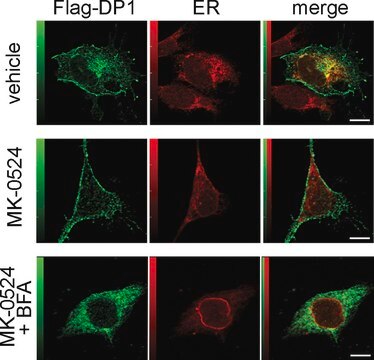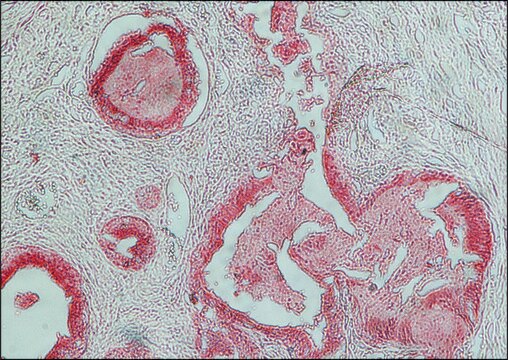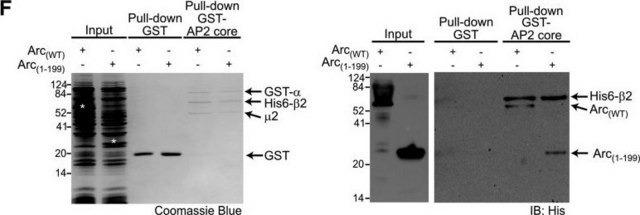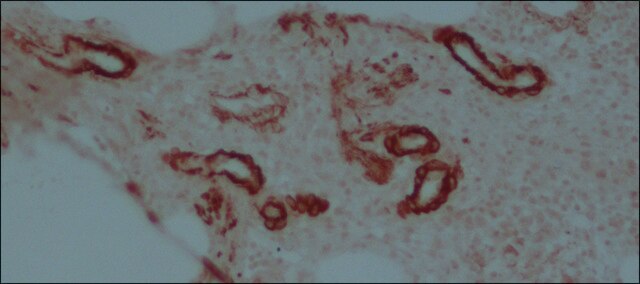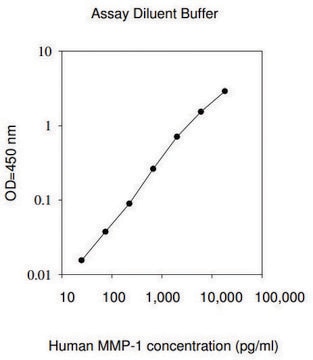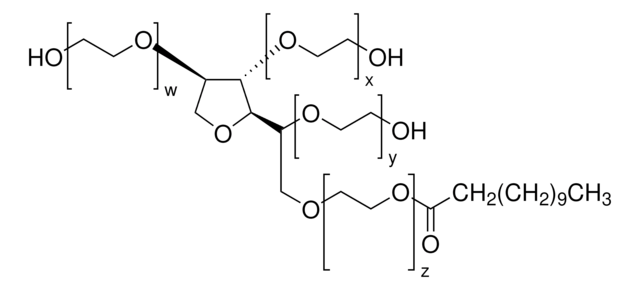AP124A
Goat Anti-Mouse IgG Antibody, Alkaline Phosphatase conjugate
Chemicon®, from goat
Sign Into View Organizational & Contract Pricing
All Photos(1)
About This Item
UNSPSC Code:
12352203
eCl@ss:
32160702
NACRES:
NA.46
Recommended Products
biological source
goat
Quality Level
conjugate
alkaline phosphatase conjugate
antibody form
F(ab′)2 fragment of affinity isolated antibody
antibody product type
secondary antibodies
clone
polyclonal
species reactivity
mouse
manufacturer/tradename
Chemicon®
technique(s)
ELISA: suitable
western blot: suitable
shipped in
wet ice
target post-translational modification
unmodified
Related Categories
General description
Alkaline Phosphatase-conjugated Affinity Purified Goat anti-Mouse IgG (H+L)
Immunoglobulin G (IgG), is one of the most abundant proteins in human serum with normal levels between 8-17 mg/mL in adult blood. IgG is important for our defence against microorganisms and the molecules are produced by B lymphocytes as a part of our adaptive immune response. The IgG molecule has two separate functions; to bind to the pathogen that elicited the response and to recruit other cells and molecules to destroy the antigen. The variability of the IgG pool is generated by somatic recombination and the number of specificities in an individual at a given time point is estimated to be 1011 variants.
Specificity
Specific for mouse IgG, heavy and light chain.
Application
EIA and Western blots: 1:5,000-1:50,000.
Immunohistochemistry: 1:1,000-1:2,000.
Optimal working dilutions must be determined by end user.
Immunohistochemistry: 1:1,000-1:2,000.
Optimal working dilutions must be determined by end user.
Goat anti-Mouse IgG Antibody, Alkaline Phosphatase conjugate is an antibody against Mouse IgG for use in ELISA & WB.
Research Category
Secondary & Control Antibodies
Secondary & Control Antibodies
Research Sub Category
Whole Immunoglobulin Secondary Antibodies
Whole Immunoglobulin Secondary Antibodies
Linkage
Replaces: AP126A
Physical form
ImmunoAffinity Purified
Lyophilized. Buffer = 0.01 M Tirs HCl, 0.25 M NaCl, pH 8.0 with
15 mg/mL BSA and 0.05% sodium azide.
RECONSTITUTION:
Reconstitute with sterile distilled water to match the volume indicated on the vial label. Centrifuge product if it is not completely clear after standing for 1-2 hours at room temperature.
15 mg/mL BSA and 0.05% sodium azide.
RECONSTITUTION:
Reconstitute with sterile distilled water to match the volume indicated on the vial label. Centrifuge product if it is not completely clear after standing for 1-2 hours at room temperature.
Storage and Stability
this product is stable for several weeks at 2–8°C as an undiluted liquid. DO NOT FREEZE. For
Legal Information
CHEMICON is a registered trademark of Merck KGaA, Darmstadt, Germany
Disclaimer
Unless otherwise stated in our catalog or other company documentation accompanying the product(s), our products are intended for research use only and are not to be used for any other purpose, which includes but is not limited to, unauthorized commercial uses, in vitro diagnostic uses, ex vivo or in vivo therapeutic uses or any type of consumption or application to humans or animals.
Not finding the right product?
Try our Product Selector Tool.
Storage Class Code
13 - Non Combustible Solids
WGK
WGK 3
Flash Point(F)
Not applicable
Flash Point(C)
Not applicable
Certificates of Analysis (COA)
Search for Certificates of Analysis (COA) by entering the products Lot/Batch Number. Lot and Batch Numbers can be found on a product’s label following the words ‘Lot’ or ‘Batch’.
Already Own This Product?
Find documentation for the products that you have recently purchased in the Document Library.
Customers Also Viewed
Cancer somatic mutations disrupt functions of the EphA3 receptor tyrosine kinase through multiple mechanisms.
Lisabeth, EM; Fernandez, C; Pasquale, EB
Biochemistry null
Inactivation of Chikungunya virus by 1,5 iodonapthyl azide.
Sharma, A; Gupta, P; Maheshwari, RK
Virology Journal null
Gateway-compatible transposon vector to genetically modify human embryonic kidney and adipose-derived stromal cells.
Spyros Petrakis,Tamas Rasko,Lajos Mates,Zoltan Ivics,Zsuzsanna Izsvak et al.
Biotechnology Journal null
Cadmium accumulation and metallothionein overexpression in internal spermatic vein of patients with varicocele.
Shaw-Yeu Jeng, Su-Mei Wu, Jane-Dar Lee
Urology null
Szabolcs Takáts et al.
Autophagy, 11(8), 1209-1215 (2015-06-11)
The HOPS tethering complex facilitates autophagosome-lysosome fusion by binding to Syx17 (Syntaxin 17), the autophagosomal SNARE. Here we show that loss of the core HOPS complex subunit Vps16A enhances autophagosome formation and slows down Drosophila development. Mechanistically, Tor kinase is
Our team of scientists has experience in all areas of research including Life Science, Material Science, Chemical Synthesis, Chromatography, Analytical and many others.
Contact Technical Service